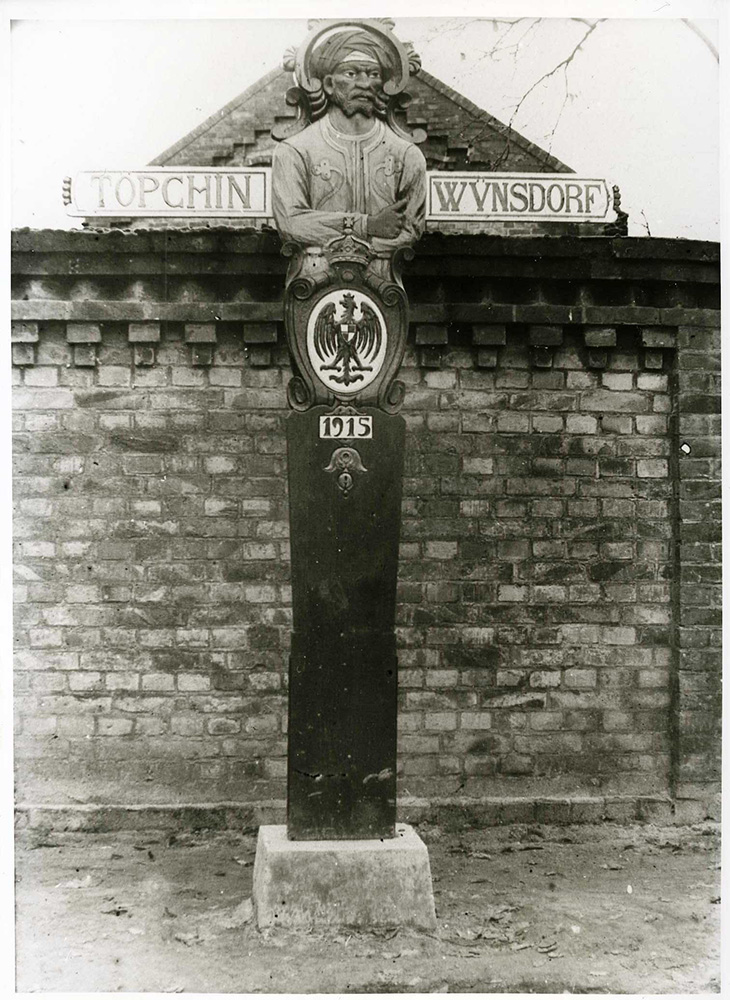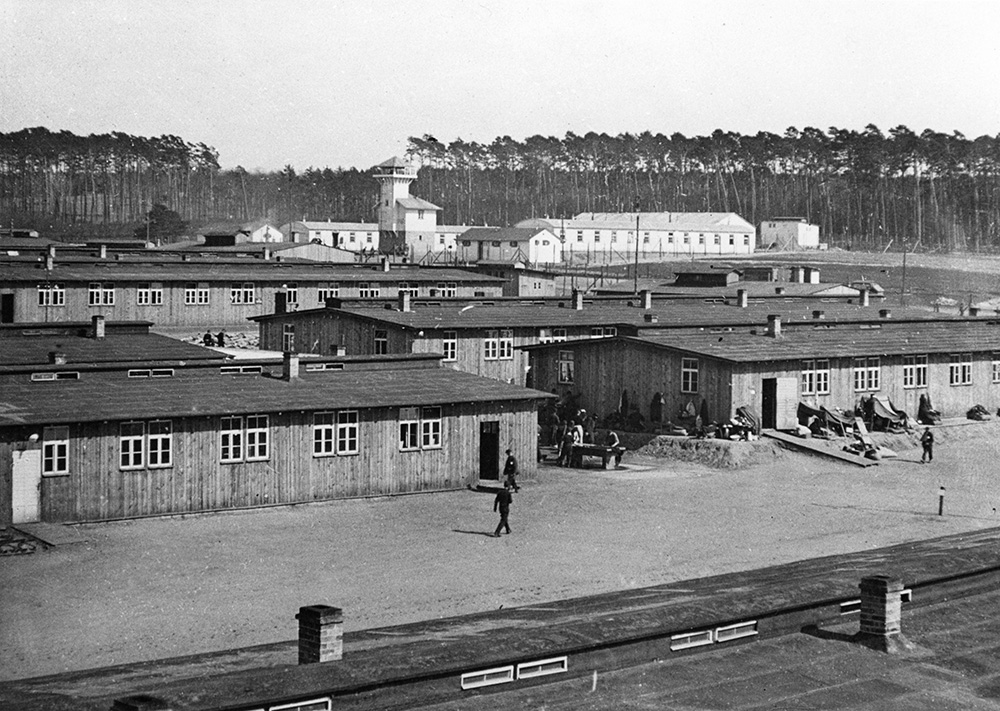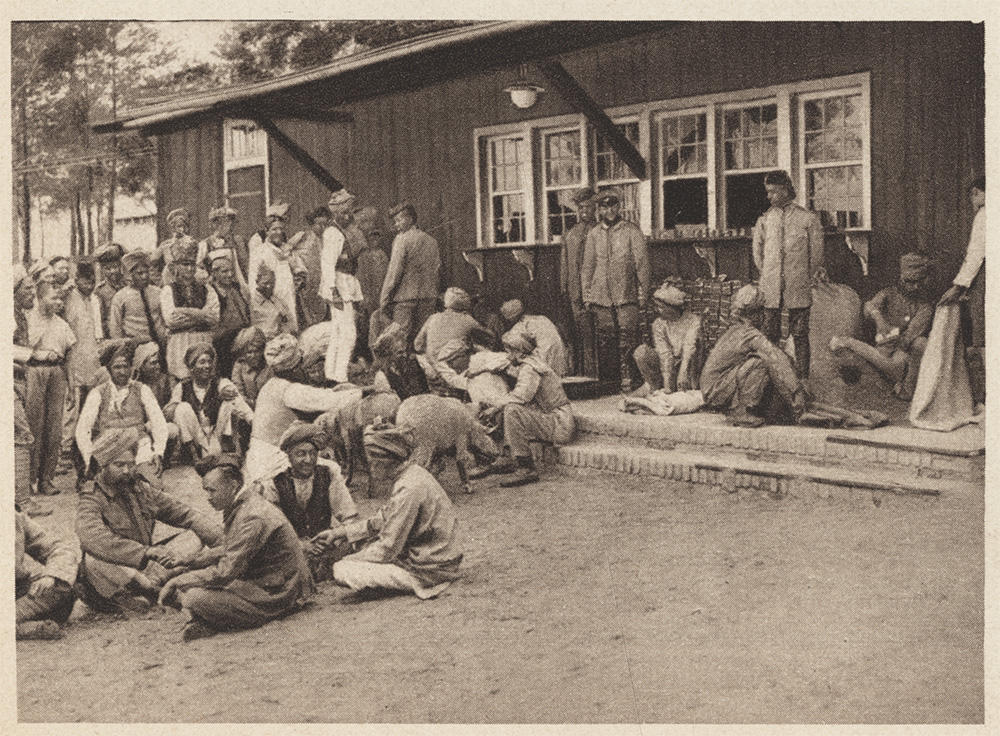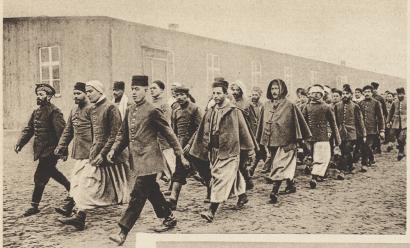WWI and Jihad ›
Halbmondlager (continued)
German leadership valued prisoners from North Africa and India more than prisoners from Russia. Leadership assumed that prisoners from North Africa and India would be more likely to join jihad and the Ottoman army. As a result, they were treated as “guests” of the Kaiser Wilhelm II.

Print, Photograph from periodical "Der Grosse Krieg in Bildern," No. 18. 1916. Germany. 1986.51.4. National WWI Museum and Memorial
“…Treat the Mohammedans who have fallen into German captivity with particular consideration, especially pay attention to religious regulations when it comes to food and give them the opportunity to fulfill their religious obligations. Good behavior inmates will be released home on grounds that Mohammedans are not to be regarded as enemies on our part.”
—German ambassador Hans von Wangenheim and consul Philipp Vassel to German Foreign Office, 1914
The Half Moon Camp was Germany’s flagship facility. At Half Moon Camp prisoners had better facilities than any other German prisoner of war camp. German leadership used it to show the world their favorable treatment of Muslim prisoners of war.

Watercolor, pencil, and ink sketch. 1915. Germany. VIII Eu 27529. Museum of European Cultures of the Berlin State Museums - Prussian Cultural Heritage.

Print, Photographic. n.d. Germany. VIII Eu 27957. Museum of European Cultures of the Berlin State Museums - Prussian Cultural Heritage.

Print, Photograph. Germany. VIII Eu 27984. Museum of European Cultures of the Berlin State Museums - Prussian Cultural Heritage.
The camp included:
-
50 barracks holding 80 prisoners per building, a low occupancy rate.
-
Larger sanitary facilities than other German camps.
-
Many outbuildings for the camp’s 4,000 prisoner capacity.
“A tobacco ration will…. win the hearts of the people, popularize the crescent camp with the rest of the Mohammedans, and show that they are actually treated better than the French prisoners.”
—Rittmeister Zürn, “Report on the Visit to the Mohammedan Prisoners’ Camp”, February 20, 1915

Print, Photograph from periodical "Der Grosse Krieg in Bildern," No. 9. 1915. Germany. 2007.68.9. National WWI Museum and Memorial.

Print, Photograph from book. 1920. Open Library.
“The commandant of the prison camp, Colonel V. Oestfeld, gave a speech to the prisoners, which was translated for the Mohammedans and in which he explained that the construction of the mosque was a gift from the German Emperor for the Mohammedans, who should not go without their religious customs even in captivity. This was followed by a speech by the Turkish ambassador. In his reply, the Mohammedan cleric thanked the camp commander for erecting the mosque and for the mild treatment of his fellow believers, which made them forget their imprisonment to such an extent that they almost regarded themselves as guests of the German people.”
—Description of inaugural ceremony of mosque on July 13, 1915

